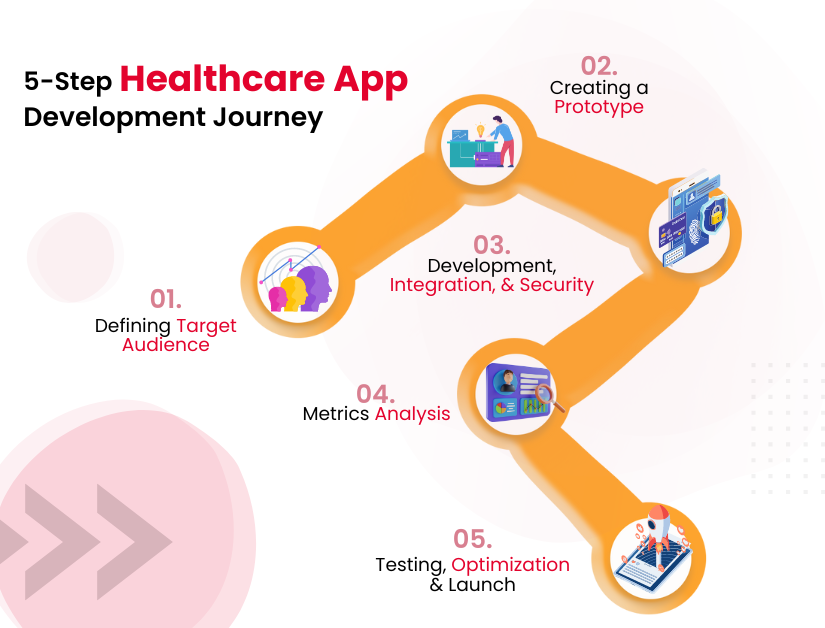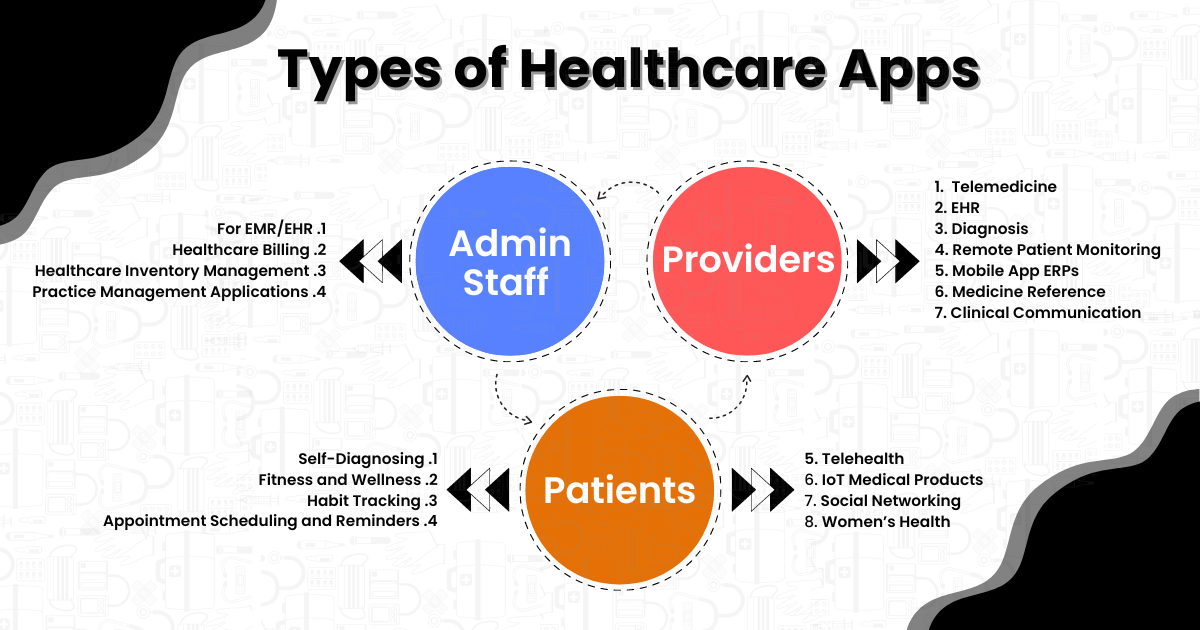The healthcare app development process entails the following steps:
Research and Planning
This phase involves thorough research and planning to define the app’s objectives and target audience. Identify the specific healthcare needs that the app aims to address and understand the existing market landscape.
Conduct market research and competitor analysis to identify gaps and opportunities. Define the app’s unique selling propositions and create a comprehensive plan that outlines the app’s features, functionality, and overall roadmap.
Wireframing and Design
In this phase, the focus is on designing the app’s user interface (UI) and user experience (UX). Create wireframes, which are basic visual representations of the app’s layout and functionality. Design the UI elements, screens, and navigation flow to ensure a seamless user experience.
Consider usability principles, accessibility guidelines, and branding requirements while designing the app. Collaborate with UI/UX designers to create visually appealing and intuitive designs that align with the app’s objectives and target audience.
Development
Once the design phase is complete, the development process begins. Skilled developers use programming languages and frameworks suitable for the app’s target platforms (such as iOS and Android).
Implement the planned features and functionality, including appointment scheduling, health data integration, secure communication channels, and user authentication. Adhere to coding best practices, maintain clean code, and ensure scalability and performance optimization during the development process.

Testing and Quality Assurance
This phase focuses on ensuring the app functions flawlessly across different devices, operating systems, and scenarios. Conduct comprehensive testing to identify and fix any bugs or issues. Test for functional correctness, performance, security vulnerabilities, and compatibility.
Utilize various testing methodologies such as manual testing and automated testing to ensure the app meets the highest quality standards. Involve a dedicated quality assurance team to conduct rigorous testing and ensure a robust and error-free healthcare app.
Deployment and Launch
Once the app has passed all testing stages, it is ready for deployment. Prepare the app for submission to relevant app stores, such as the Apple App Store and Google Play Store. Follow the guidelines and procedures provided by each app store to ensure a smooth submission and approval process.
Ensure compliance with regulatory requirements, such as HIPAA, to maintain the security and privacy of user data. Prepare marketing materials, including app descriptions, screenshots, and promotional assets, to maximize the app’s visibility upon launch.
Post-Launch Maintenance
After the app is launched, the work doesn’t stop. Continuous maintenance and updates are crucial for the long-term success of the healthcare app. Monitor user feedback, reviews, and analytics to identify areas for improvement and address any bugs or issues that arise.
Regularly release updates to introduce new features, enhance usability, and improve security. Stay up to date with the latest industry trends and technological advancements to ensure the app remains relevant and competitive in the ever-evolving healthcare landscape.















